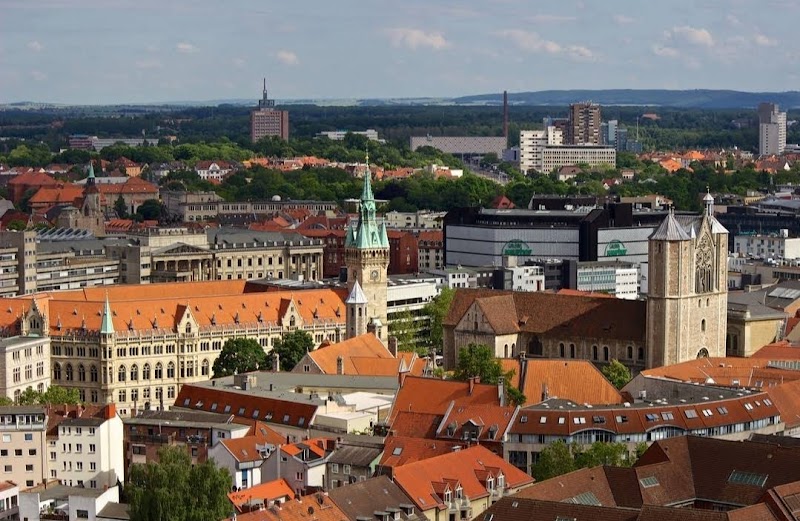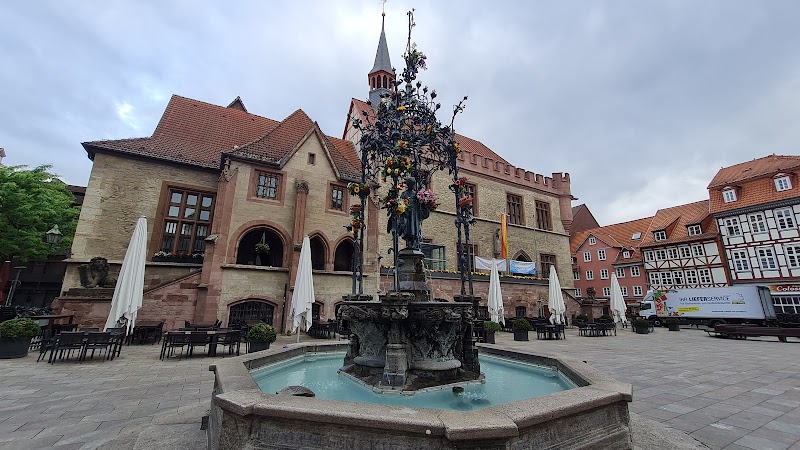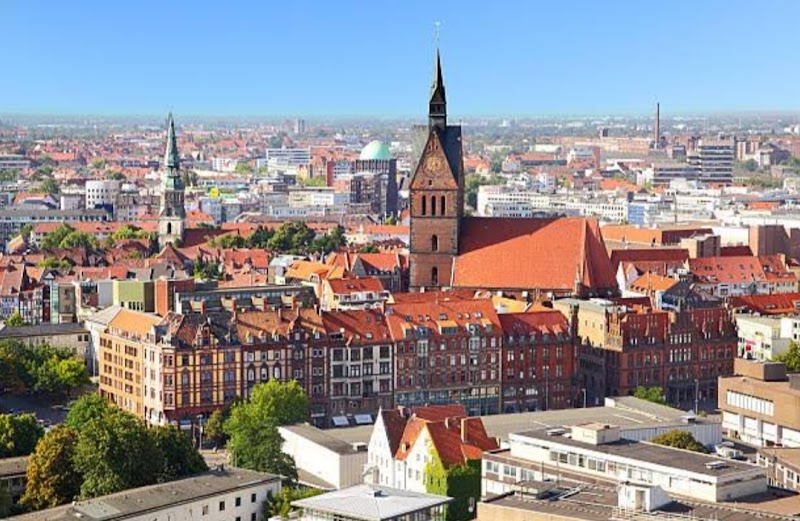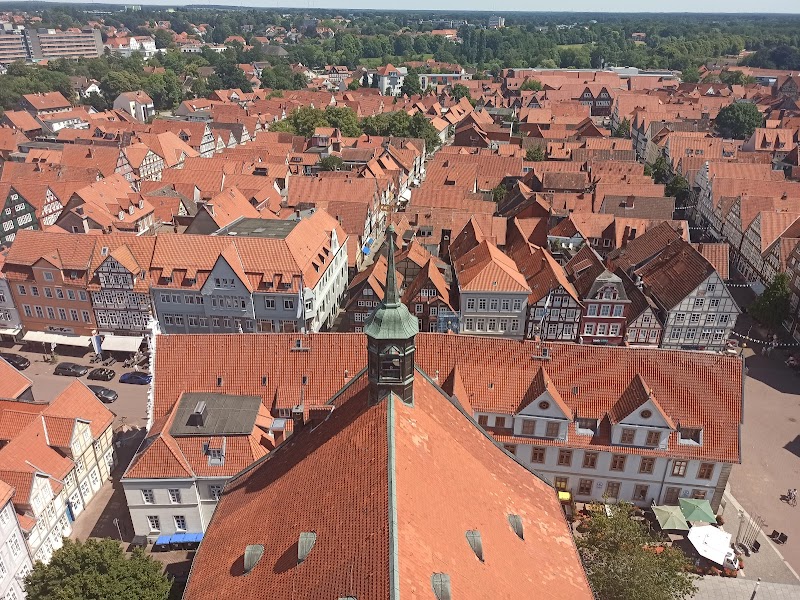Welcome to Lower Saxony: A Land of Enchantment
Welcome to Lower Saxony, the second-largest federal state in Germany, filled with a variety of natural, cultural, and historical wonders. The region's diverse landscapes, ranging from the majestic Harz Mountains to the sprawling heathlands, and its UNESCO World Heritage sites offer a myriad of unforgettable experiences. Our comprehensive Tourist Map of Lower Saxony offers an indispensable guide to help you uncover the magic that lies in every corner of this region.
This enchanting land, steeped in tradition yet exuding a modern charm, beckons you to weave your own narrative, creating an experience as unique and grand as Lower Saxony itself.
" Booking.comUnveiling the Hidden Gems of Lower Saxony
Every step you take in Lower Saxony reveals a new treasure. Lesser-known medieval castles, vibrant modern art scenes, and secret spots that take your breath away. Get ready to be surprised and captivated by the hidden gems that lie in the heart of Lower Saxony.
Discover Lower Saxony's Fascinating Cities
Each city in Lower Saxony carries its own charm and history. Experience the old-world charm of Celle, the bustling modernity of Wolfsburg, and the contrasting landscapes that define Lower Saxony's identity.
Historic Wonders of Celle
Celle is a city of antique charm, with over 400 half-timbered houses taking you back in time. The Celle Castle, a stunning blend of Renaissance and Baroque architecture, is the crowning jewel of the city. While you're here, don't miss the Bomann Museum for a deep dive into the region's cultural history.
Wolfsburg: The City of Cars
Wolfsburg, the birthplace of Volkswagen, offers a unique snapshot of Lower Saxony – a blend of innovation and modernity. The Autostadt, an automobile-themed park, tells the fascinating story of cars through the ages. A stone's throw from here lies the Wolfsburg Castle, a Renaissance-era fortress that stands as a testament of time.
Immerse in Lower Saxony's Natural Splendors
Lower Saxony is a paradise for nature enthusiasts. The tranquil landscapes of Lüneburg Heath and the mystic beauty of Lake Steinhude Nature Park speak volumes about Lower Saxony's diverse natural heritage.
Lüneburg Heath: A Purple Paradise
Every August, the Lüneburg Heath turns into a sea of purple, as the heather blooms in all its glory. This breathtaking spectacle, combined with ancient megalithic sites scattered across the region, offers a unique experience for nature lovers. Don't forget to check our tourist map of Germany for the best viewpoints in the area.
Steinhude: Lower Saxony's Largest Lake
The Lake Steinhude Nature Park is a sanctuary for birdwatchers and nature lovers alike. The true charm, however, lies in the lake's islands, particularly Wilhelmstein Island, featuring a historic fortress-turned-museum. A boat ride on this vast lake offers a memorable experience of Lower Saxony's untouched beauty.
Experience Lower Saxony's Cultural Tapestry
The cultural fabric of Lower Saxony is a vibrant mix of festivals, a thriving art scene, and a deep-rooted tradition of craftsmanship. From Braunschweig's Carnival of Cultures to the artisan workshops in Osnabrück, the cultural offerings of the region enrich your travel experience manifold.
Braunschweig: A Cultural Melting Pot
Experience Braunschweig's multicultural essence at the Carnival of Cultures, where you can witness traditional costumes and dance forms from around the world. The city's rich heritage is also showcased in the magnificent Brunswick Cathedral and the historic Burgplatz square.
Osnabrück: Where Artistry Thrives
Osnabrück, known for its artisan workshops, presents a unique perspective of Lower Saxony's cultural heritage. Traditional goldsmithing, modern ceramics, and other crafts keep age-old traditions alive while pushing the boundaries of creativity.
From quaint historical towns to bustling modern cities, from the blooming heathlands to the serene lake, Lower Saxony is a land of contrasts waiting to be explored. Embark on this journey and let Lower Saxony's hidden gems surprise and inspire you at every turn.

Practical Information for Lower Saxony
Transportation and Mobility
Thanks to its comprehensive transportation system, exploring Lower Saxony is a breeze. With a vast network of trains, buses, and trams, you can easily travel through the region's cities and towns. For a more scenic journey, consider using the numerous bike paths that crisscross the state, or embark on a boat trip along the Weser river.
The Deutsche Bahn (German Rail) offers extensive train services, connecting smaller towns with major cities. Lower Saxony Tickets (Niedersachsen-Tickets) offer a cost-effective solution for unlimited day travel, covering local trains and public transport in many areas.
Schedules and Prices
Train and bus services operate from early morning until late at night, with reduced services on Sundays and public holidays. We recommend checking the latest schedules online before setting off, as they can change depending on the time of the year. DB Navigator is a reliable app for checking train times and purchasing tickets.
Lower Saxony Tickets start at €23 for one and increase by €5 for each additional passenger, up to a maximum of five people. These tickets are valid only after 9:00 AM on weekdays but can be used all day on weekends and public holidays.
Safety Tips
While Lower Saxony is generally safe, it's important to stay alert and aware of your surroundings during your travels. Always secure your valuables and take caution when traveling at night, particularly in larger cities.
Emergency services in Germany are responsive and efficient. The general emergency number is 112, while the number for the police is 110. Ensure you have travel insurance that covers health emergencies, as medical care in Germany is excellent but can be costly without insurance.
Practical Recommendations
The climate in Lower Saxony is temperate but can be unpredictable. So pack layers and don't forget an umbrella or raincoat, especially for summer travel when unexpected rain showers can occur. Remember that most shops in Germany close by 8:00 PM and are closed all day on Sundays, so plan your shopping accordingly.
The best time to visit Lower Saxony depends on your interests. Summers are perfect for outdoor activities and exploring the region's beautiful landscapes, while winter brings Christmas markets and snowy mountain retreats. However, be aware that popular tourist sites can get crowded during the peak summer months of July and August.

Frequently Asked Questions about Lower Saxony
Q1: What unique culinary experiences does Lower Saxony offer?
A1: Lower Saxony's cuisine is a delight for food lovers. Try the hearty Grünkohl, a traditional dish with kale, pork belly, and sausages, or treat yourself to a piece of Welfenspeise, a creamy pudding from the House of Hanover. The region is also famous for its excellent beer, like the celebrated Einbecker Brauherren Pils. Be sure to visit a local farmers' market to truly appreciate the fresh, regional products that make Lower Saxon cuisine so special.
Q2: I'm an architecture enthusiast. Does Lower Saxony have any notable architectural landmarks?
A2: Lower Saxony is a gem for architecture lovers. The half-timbered houses in Celle and the modernist structures in Wolfsburg are just the tip of the iceberg. Visit the Brunswick Cathedral in Braunschweig for a blend of Romanesque and Gothic architectural styles or explore the Baroque landscaping and architecture at the Herrenhausen Gardens in Hanover. For a modernist twist, don't miss the Sprengel Museum in Hanover.
Q3: How accessible is Lower Saxony for travelers with disabilities?
A3: Lower Saxony is dedicated to making travel enjoyable for everyone. Many attractions, including the Autostadt in Wolfsburg and the Hanover Zoo, are wheelchair-accessible, and public transportation services are generally accommodating to travelers with disabilities. For more detailed information, we recommend contacting the tourist information center of the city you plan to visit.
Q4: What off-the-beaten-path experiences can I enjoy in Lower Saxony?
A4: Lower Saxony abounds with hidden gems. For a unique cultural experience, visit the Artland area in the Osnabrück district, home to beautifully preserved half-timbered farmhouses. Nature lovers should explore the Wadden Sea National Park, a UNESCO World Heritage site with unique tidal mudflats. For a peaceful retreat, visit the charming island of Spiekeroog, one of the East Frisian Islands, which is car-free and known for its tranquility.
Q5: Are there any local festivals or events in Lower Saxony that I shouldn't miss?
A5: Lower Saxony hosts a variety of events throughout the year. Music lovers should not miss the Hanover Schützenfest, the world's largest marksmen's festival, featuring numerous concerts and performances. In autumn, the Bad Zwischenahn Smokey Oak Festival is a treat for foodies, celebrating the region's smoked ham. For a unique cultural event, attend the International Film Festival in Braunschweig, the oldest film festival in Germany, showcasing a diverse array of films from around the world.
Q6: I'm interested in outdoor activities. What can I do in Lower Saxony?
A6: Lower Saxony is a paradise for outdoor enthusiasts. The Harz Mountains offer excellent hiking and mountain biking trails, while the region's numerous lakes, including Lake Steinhuder, are perfect for water sports, fishing, and boating. For a unique experience, try mudflat hiking in the Wadden Sea or bird-watching in the Lüneburg Heath Nature Reserve. No matter your interests, Lower Saxony's diverse natural landscapes provide countless opportunities for outdoor adventure.


